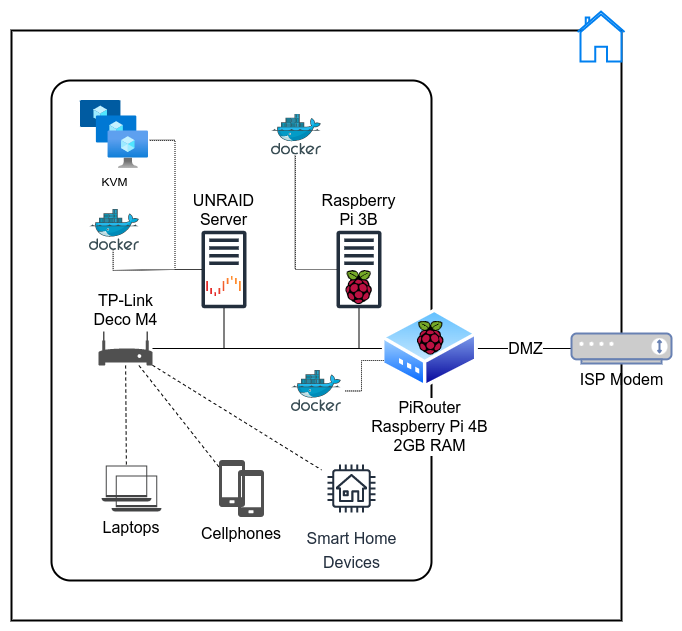In this first part, I’ll be going into a general description of my home network, as well as the services I’m running in my PiRouter.
Network description
 Figure 1 - General network diagram
Figure 1 - General network diagram
As you can see in the previous image, I’ve got my ISP modem, whose function is to connect with my ISP. From there, the PiRouter is setup in the modem’s DMZ, so that it receives all traffic.
The PiRouter has 2 ethernet interfaces:
- The Raspberry Pi integrated Gigabit Ethernet, which connects to the internal network (lan0).
- A USB 3.0 Gigabit Ethernet adapter, which connects directly to the ISP modem (wan0).
Internally, I’ve got a server running Unraid on an old Supermicro server, which sports an Intel Xeon E5620 with 24GB of RAM. This server runs a couple of VMs and several containers.
I also have a Raspberry Pi 3B running Raspberry Pi OS with some containers used in home automation.
For WiFi, I use 2 TP-Link Deco M4 antennas. I need the power since I live in a two-story flat with a total surface of 175m² (1,880 sqft), with thick reinforced concrete walls.
My home automation runs on Home Assistant, using both WiFi and Zigbee. I’ll probably go into this topic on another series of posts.